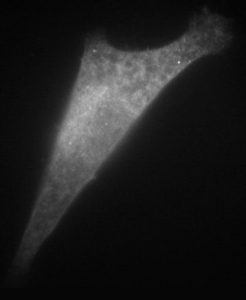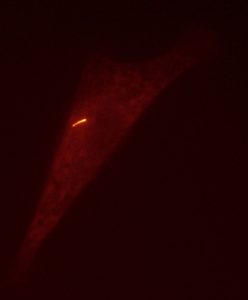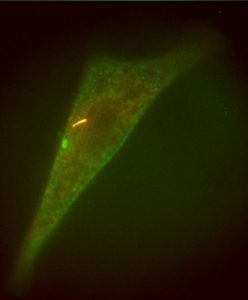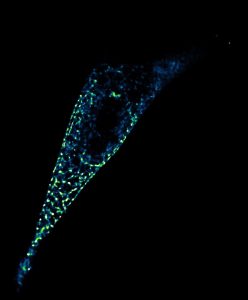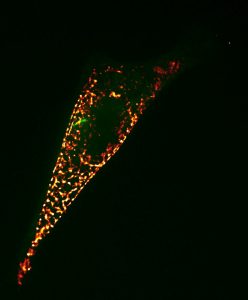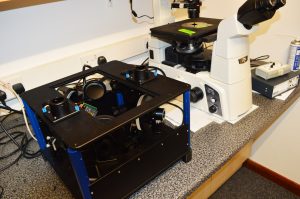
CairnFocal
For more years than we care to remember, we have wanted to develop a confocal microscope based on a spatial light modulator, and at long last we have a design that performs well enough for us to commercialise. Would you like to help us develop it further?
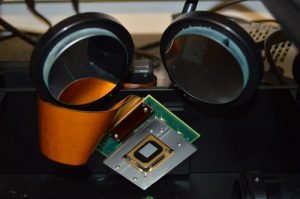
DMD Chip
We had previously tried to develop such a microscope as part of a collaboration, using liquid crystal displays, but unfortunately we weren’t able to achieve the performance levels that we felt we needed for a commercial product. Subsequent cautious experimentation on our own account with Digital Micromirror Devices (DMDs) gave much more encouraging results, and we were able to solve the well-known technical problems of using these devices confocally much more satisfactorily than we had expected.
The main technical problem is to achieve high-quality confocal images from light that has been reflected from the DMD at the relatively high angle of 24 degrees. Our proprietary optical system achieves this by using a mirror-based collimation system with an optical axis offset in the subsequent infinity space, which effectively removes that angular offset in imaging space, and thereby allows conventionl lens optics to be used for high-quality refocussing. This gives a images with minimal levels of aberration or distortion, as the users of our two prototypes will attest.
We now have a fully developed piece of hardware, so we are looking for a few more “early adopters” to help us move forward with the software. We want to encourage the development of a user group for developing this in the public domain, so that we can concentrate on providing the hardware at a correspondingly lower cost. And because the next few users will need – or indeed want – to become directly involved in the software development, the cost of the next few systems will be still lower to reflect that.
We already have several potential customers to help us pursue this approach, but we may still be able to accommodate a few more. So if this sort of possibility may be of interest to you, then do please get in touch, so that we can give you some further details.
- (a)
- (b)
- (c)
- (d)
- (e)
a) Widefield image of 3t3 cell expressing NrCAM stained with AF 647, b) Widefield image of cilia expressing Arl13b stained with rhodamine red (532), c) Grouped Z projection of 10,000 STORM frames overlaid on widefield image of cilia, d) ThunderSTORM reconstruction of STORM data, e) Widefield cilia overlaid on STORM image –
Images captured with the Cairnfocal credit and thanks to Liyana Valiya Peedikakkal and Ashley J. Cadby

